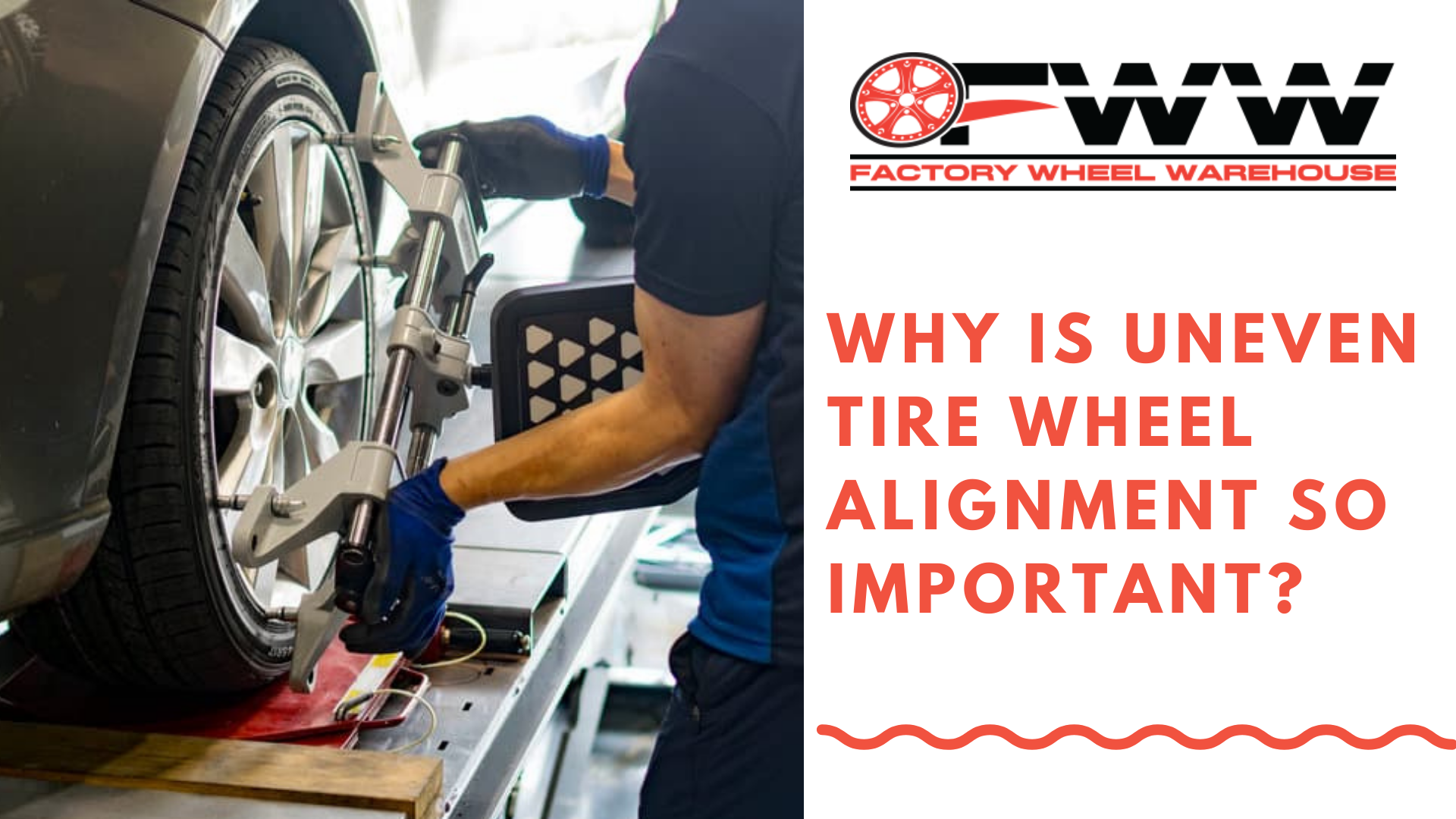Why is uneven tire wheel alignment so important?

Why is uneven tire wheel alignment so important?
Checking wheel alignment is a common practice after driving the car wheels for certain miles. To a common man, the wheels of any car might seem perfectly straight, but they are not. Every manufacturer predefines some particular angles to the car wheels for optimum performance. All four car wheel angles are tilted to provide a perfectly balanced drive on curved paths.
What are the types of car wheel angles and what is a camber angle?
There are three different angles in a wheel. These angles are known as camber angle, caster angle, and toe angle. Camber angle is an angle that can be viewed from the front of the car. This angle can be either a positive camber or a negative camber depending upon the orientation of the wheel. If the wheel is tilted outwards from the center position, then it is called a positive camber angle while if the car wheels are tilted slightly inwards then it is called a negative camber angle. The negative camber angle improves the cornering performance of the car wheel while driving.
What is the importance of the camber angle?
If the camber angle is zero then the car wheels when moving in a circular path, a force is exerted on the car body called a centripetal force. This force comes from the friction between the tires and the road. This frictional force deforms the car wheel decreasing the contact area of the wheel with the road which leads to a reduction of frictional force. So, if the outer wheels are tilted inward keeping a negative camber. On the other hand, the inner wheels with a negative camber angle lose some friction but provide overall stability to the car.
What is the caster angle of a car wheel?
The next angle is the caster angle. This angle is observed when the steering wheel is tilted and the steering axle in return moves as a result of moving the wheel. Ideally, the steering axle is never completely straight. Thus, the inclination is called the casting angle. The automatic moving of the steering wheel back to its original position after taking a turn is due to the caster angle.
Also read: Chevy Silverado Rims
What is the toe angle of a car wheel and why is it so critical?
Next comes the toe angle which is also the most critical among all the angles. Usually, the toe-in angle is very small less than 0.5 degrees. It depends on the car manufacturer as different car manufacturers have different degrees of angles. Keeping a zero-toe angle will give minimum wear and tear to the wheel. But the minor unintentional steering movements while driving the car should not affect the straight-line action of the car. The toe-out condition is a condition in which the inner wheels tilt more than the outer wheels.
Thus, if we adjust the front wheels in a toe-out manner then an ideal steering condition can be achieved with a slight movement of the custom steering wheel. This leads to unintentional movement of the car upon small slight movements of the custom steering wheels resulting in an over-response of the vehicle and resulting in loss of the car to move in a straight line. Thus, due to this reason, a toe-in position is always used in the car wheels. The toe-in position reduces the steering response increasing the straight-line stability of the car.
Conclusion:
Wheel alignment is necessary after driving the car for a few months as these angles are very sensitive for maintaining the car's stability. It is for one's safety to keep check of these angles and make sure the car's straight-line stability is maintained. For the best car wheel repair and car wheels and rims buying facility, one can avail of the services from Elite of Albany and the Factory Wheel Warehouse store near you respectively. The best factory OEM wheels are available at our facility with a wide range of designs. One can also order online from our store to ensure fast delivery and ease of having the car wheels delivered to your doorstep.
For professional customer services about rims and wheels call us at +1 518-579-9260.
Related Articles: Different Types of Car Rims You Can Buy For Your Car









